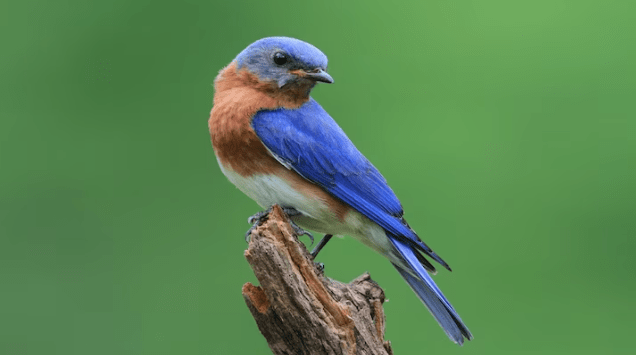PUBLISHED: February 2024 By Ethan Placke, HPB Conservation Technician
Eastern Bluebirds (Sialia sialis) are well known and gregarious Houstonians. The bright blue feathering on top of the males makes for an easy and pleasant distraction as they flit by, on their way to perch on a fence or dive at an insect on the ground.

These little blueberries with wings are very industrious–at least the females are–as they often build multiple nests on their own. The males will find the nesting spot, sometimes a nest box or an old woodpecker hole in a dead pine tree, and attract a female into it.
Once the female decides a spot is good enough, she will do all the work with construction. They can also have multiple successful broods in a year, which can make it annoying when you have to figure out when to clean their nest boxes.

Eastern bluebird eggs, like the males of the species, can have a similar blue to blue-green hue, and be equally attractive.
Bluebirds are technically thrushes, like American Robins (Turdus migratorius). Like their cousins, some bluebirds stay in the Houston area year-round, the others will visit breeding grounds in the northern US and into Canada a bit before migrating south as far as Southern Mexico. They’re unlikely to come to a feeder unless that feeder includes tasty mealworms or some other insects they can munch on. A bird box can help bring them around too.
Eastern Bluebirds, while not uncommon, are always a delight to see out and about. The flashy males, the wavering calls they make, and the general energy they bring with them everywhere make them a great part of our city.

